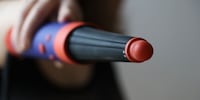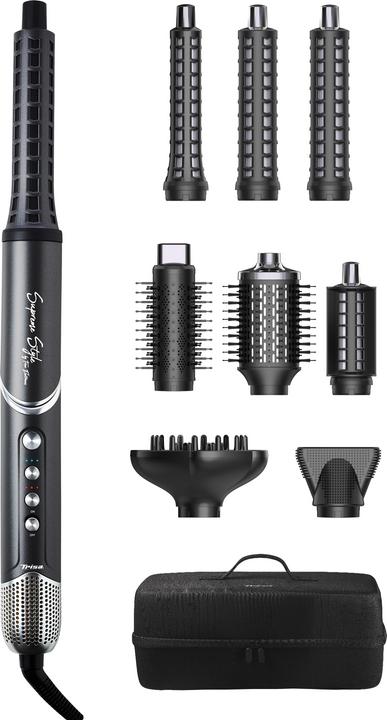

Twins or distant cousins? How similar Trisa’s Supreme Style Multistyler is to the Dyson Airwrap
The Supreme Style Multistyler is Trisa’s answer to the Dyson Airwrap. One handpiece and seven different attachments. The whole thing costs less than half of the popular luxury tool. A cheap copy or serious competition?
Since the launch of the Airwrap, various manufacturers have been «inspired» by Dyson’s celebrated multistyler. Swiss company Trisa is one of them. As a fan of the original, I understand the demand for a cheaper, comparable product. Can the Trisa Supreme Style close this gap?
I just want to be clear, this review isn’t an end-to-end comparison between the Supreme Style Multistyler and the Airwrap. I want to get an overall picture of what the set can do. I’ll only make selective comparisons for aspects relevant to those considering the device as an alternative to Dyson’s model.
What’s included:
- User manual
- Style Guide
- Handpiece
- Two curling attachments (left and right rotation), each 30 mm in diameter
- Two curling attachments (left and right rotation), each 38 mm in diameter
- Round brush attachment
- Oval brush attachment
- Styling nozzle
- Drying attachment
- Diffuser
At first glance, it’s quite impressive. Trisa presents a selection of attachments that you won’t find with the Airwrap. These include the oval round brush, the diffuser and the styling nozzle. On the other hand, you’ll find smoothing brush attachments with Dyson’s model that Trisa doesn’t offer in their set.
Travel bag
Surely this isn’t the storage bag? The robust textile case, which can be opened halfway, and its handle are more reminiscent of a toolbox in terms of shape. I don’t know where I’m going to put it yet.
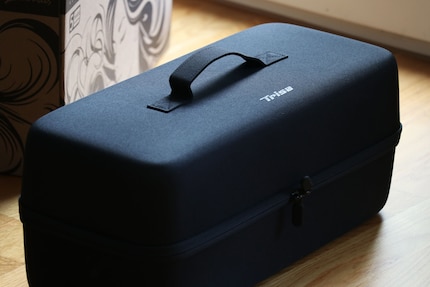
Source: Natalie Hemengül
On one side there’s space for the handpiece and the elongated curling accessories, on the other side, protected by a net, there are compartments for the remaining attachments. A little annoying, because the zipper in the mesh insert doesn’t open all the way around. It runs across the middle and is slightly offset, so it’s not so easy to pack the bulky attachments in there. Especially as the bristles often get caught in the net. All in all, though, the case has a high-quality appearance.
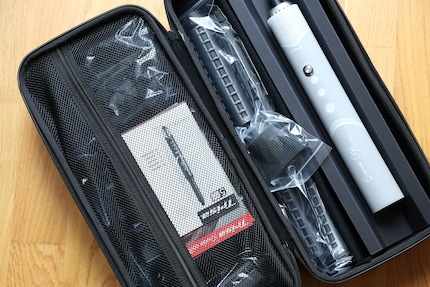
Source: Natalie Hemengül
Handpiece and settings
Unlike the Airwrap, the handpiece is flexible. To create the typical hairdryer shape, I hold down the switch on the back and push the top third down at an angle until it clicks into place at a 90-degree angle. This makes it easier to guide the styling nozzle and diffuser.
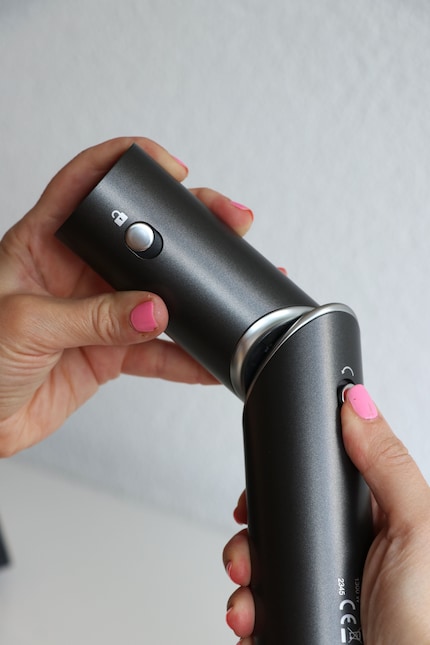
Source: Natalie Hemengül
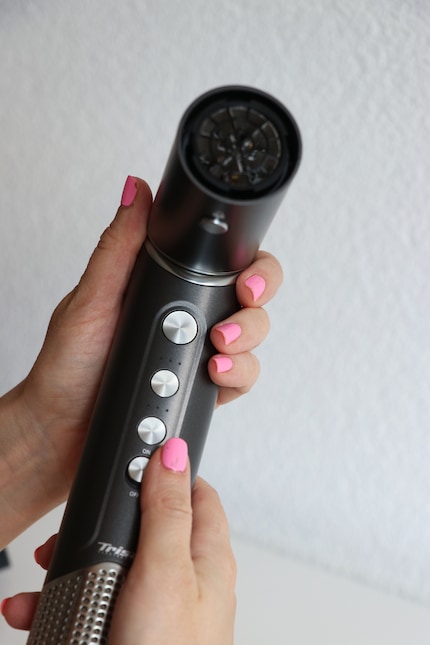
Source: Natalie Hemengül
With this in mind, I want to take a moment to praise the enclosed style guide. All attachments and functions are clearly illustrated and explained – including recommended settings. On the front, the Multistyler has an on/off control, three temperature settings (indicated by three red lights), three strength settings (indicated by three blue lights) and a cold air button. The latter requires you to press and hold. On the back, in addition to the switch for folding, I also find a release button for removing attachments.
It takes me a few attempts to get the attachments on first time. I need more pressure and care here than I’m used to with the Airwrap. I can tell the attachment is correctly engaged when the release button on the back snaps upwards.
What the attachments can do
Drying
There are three attachments for blow-drying my hair:
- The diffuser is designed to create natural volume, a particularly important piece for curly hair. It has a control on the back that can be used to adjust the length of the individual diffuser fingers. If I exert pressure on the fingers from the front, they withstand it at the set height. Pretty cool. But since I don’t have curls, I don’t use the diffuser in my case.
- The styling nozzle ensures a guided airflow and precise styling. It’s my favourite, because it doesn’t just swirl hair up wildly, but dries it in a targeted manner. I also like the velvety feel.
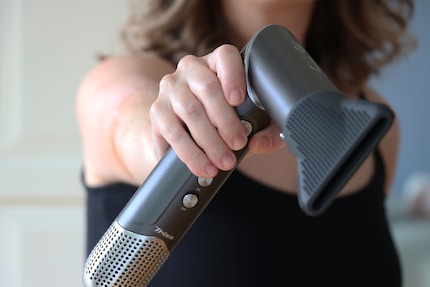
Source: Natalie Hemengül
- With the drying attachment, I smooth out flyaway hairs without any problems. I find the name a bit misleading, as I’m only supposed to use it on completely dry hair. Personally, I think it’s more of a tool that gives the hair the «finishing touch» and tames frizz. It has two holes which the air flows out of. But not at the same time. I can use the regulator to decide which of the two the air should come from. This is practical because I can work on hair on one side of the parting first before switching to the other side.
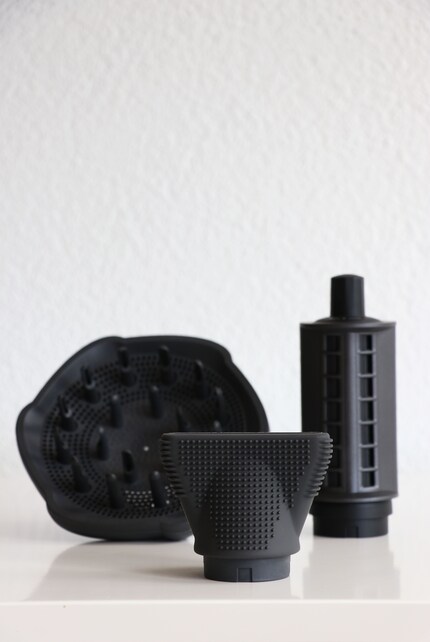
Source: Natalie Hemengül
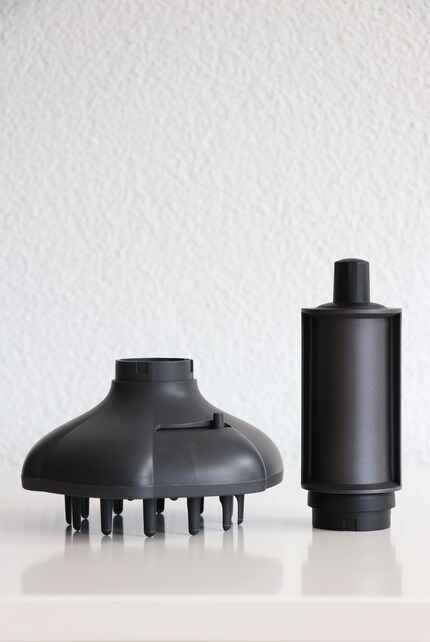
Source: Natalie Hemengül
In theory, the appliance can be used as a hairdryer without the attachment. At 1,300 watts, the drying power is on the weaker side compared to my hairdryer. Nevertheless, I find drying my hair more pleasant compared to the Airwrap. This is partly thanks to the 90° angle, which makes handling less awkward, and partly due to the available nozzle attachment, which isn’t available with the Airwrap. In short, a more powerful hairdryer is definitely an advantage for long, thick hair. But this one is more than suitable for short and/or fine hair. Even as a travel companion.
Curls
You’ve probably only read this far because you want to know what the curling attachments are capable of. After all, they’re everyone’s favourite part of the Airwrap. Trisa provides a choice of two diameters. 38 millimetres for larger curls and 30 millimetres for tighter curls. Similar to Dyson’s predecessor model, you always need two attachments per diameter size. One for each lock direction. Dyson has since revised its attachments and now relies on a switchable single attachment. The manual says it’s best to use the curling attachments on slightly damp hair.
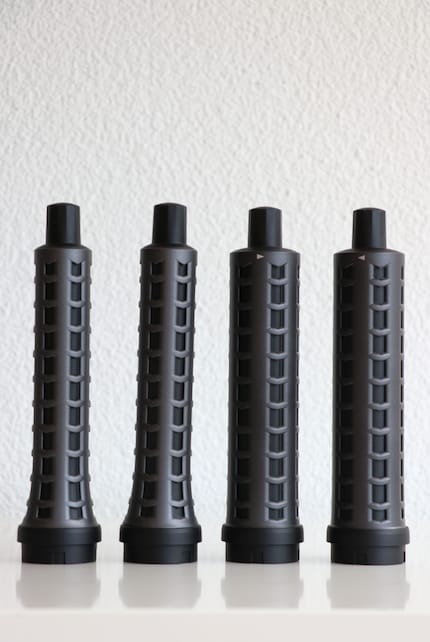
Source: Natalie Hemengül
The good news first: on a basic level, they work. The bad news is that they don’t work as smoothly as Dyson’s attachments. By this I mean that strands of hair don’t wrap around the rod easily. Even with thin strands, it feels as if the weight and especially the ends of hair are too stubborn for the suction. They stick out, which is why I have to keep guiding them with my fingers.
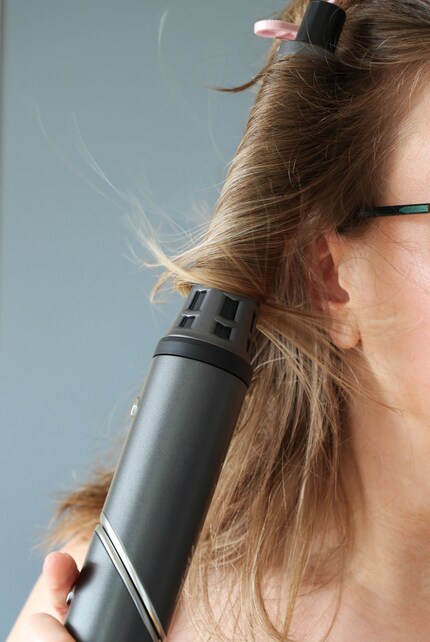
Source: Natalie Hemengül
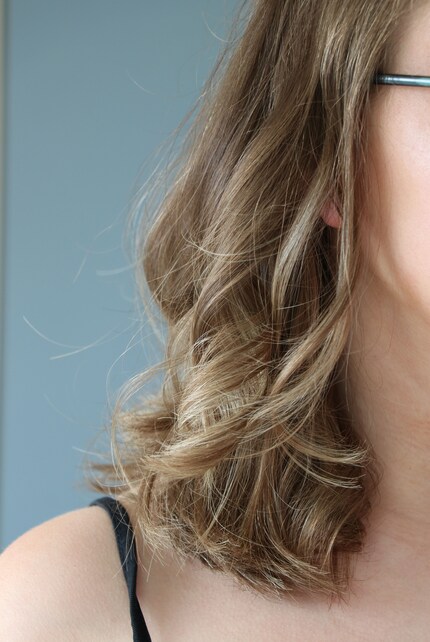
Source: Natalie Hemengül

Source: Natalie Hemengül
Considering the price difference, I could turn a blind eye – but only if the curling rod hadn’t come apart from the black base (the ring-shaped part that I snap onto the handpiece) on third use. Although I was able to reattach the base to the curling rod, it doesn’t fill me with much confidence. Plus, the waves/curls lack bounce and definition compared to Dyson’s results, which is reflected in their longevity.
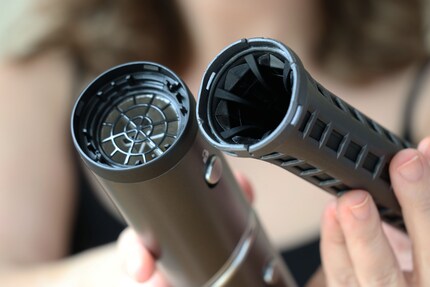
Source: Natalie Hemengül
Brushes
The attachments used most frequently on my shoulder-length hair are the two brushes. Especially the oval one. With its large side surface, I can blow-dry my damp hair relatively quickly and straight into shape. I then use the tight curve to add bounce and momentum to the ends of my hair. It’s great. My only point of criticism is the cylindrical tip could have a better grip. I hold it with my other hand to exert more controlled pressure on my hair. This isn’t an issue with the narrower brush. I’d add a few more rows of bristles to this one so that there’s a more reliable grip on my hair.

Source: Natalie Hemengül
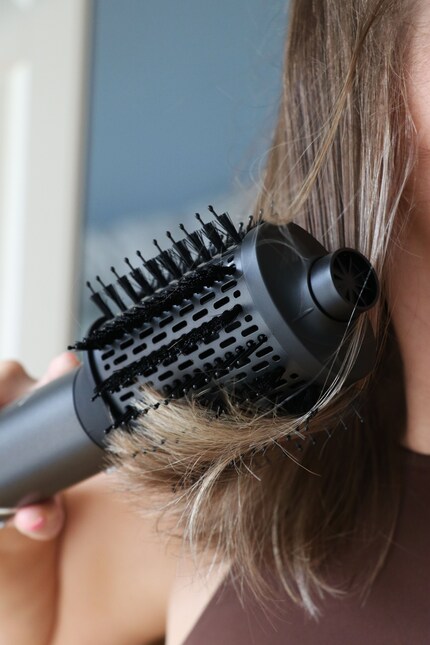
Source: Natalie Hemengül
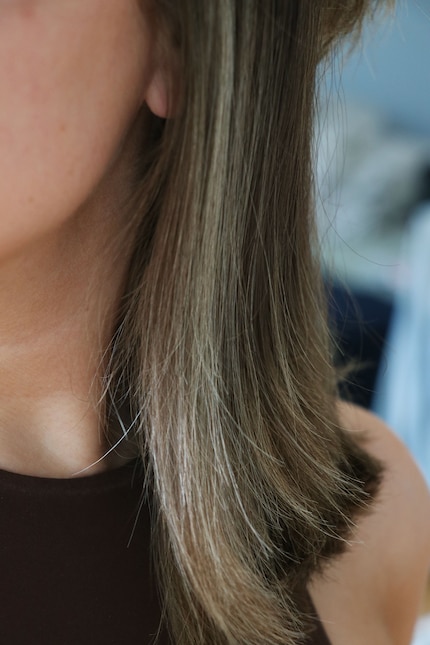
Source: Natalie Hemengül
Handling and noise
At 350 grammes, the handpiece is relatively easy to grip and guide. The bending mechanism is practical, but compromises handling – unlike the Airwrap, the buttons are positioned far down. This means I have to hold the styler quite low down, almost above the filter, which makes it more difficult to navigate the tools. What’s more, unlike Dyson’s model, the power button and the cooling function I like to use after every strand, are split between two different buttons. So I have to constantly switch between them. But I think I can overcome this with a little practice.
Another thought I’ve had concerning the bending mechanism is that it’s a weak point that certain attachments (for example the round brush) exert pressure even when straight. Occasionally, I feel like there’s some wiggle room there. Although I want to emphasise the construct seems stable overall (except for the curl attachment incident). Will the mechanism gradually become looser after heavy use?
As far as background noise is concerned, the Multistyler is decent. I’d give it extra points for the three-metre cable and useful cable tie too.
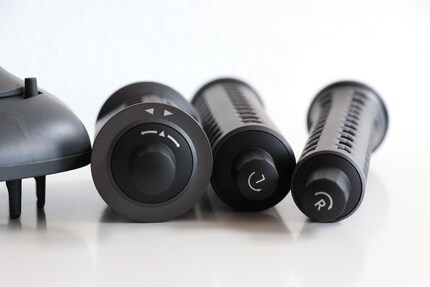
Source: Natalie Hemengül
In a nutshell
Trisa’s multistyler does a decent job
The Supreme Style Multistyler and Airwrap definitely aren’t twins. Rather distant cousins who have their own qualities. Whether you want the set as an alternative to the Airwrap depends on your expectations. If you want the set – like so many – for the curling attachments, I wouldn’t recommend it. You have to fiddle with your strands too much. If I wanted to go to that much trouble, I could also use a curling iron (hair damage aside). In terms of curls, the difference between the two price segments was most obvious to me.
However, if you like to experiment with your hairstyle and regularly try out new styles, then the Trisa multi-styler is a financially sensible plan B. After all, the bending mechanism in combination with the blow-dry function offers added value. I was also impressed by the oval round brush and the drying attachments. I don’t know whether the base falling off was just a coincidence or whether it’ll become a common occurrence. But it’s a risk worth considering.
Pro
- illustrated manual
- sturdy, high-quality travel bag
- hairdryer function with different drying attachments
- bending mechanism for easy handling
- large selection of attachments
Contra
- curling attachments don’t work completely «smoothly»
- one part of the curling attachment detached from the base

As a massive Disney fan, I see the world through rose-tinted glasses. I worship series from the 90s and consider mermaids a religion. When I’m not dancing in glitter rain, I’m either hanging out at pyjama parties or sitting at my make-up table. P.S. I love you, bacon, garlic and onions.
